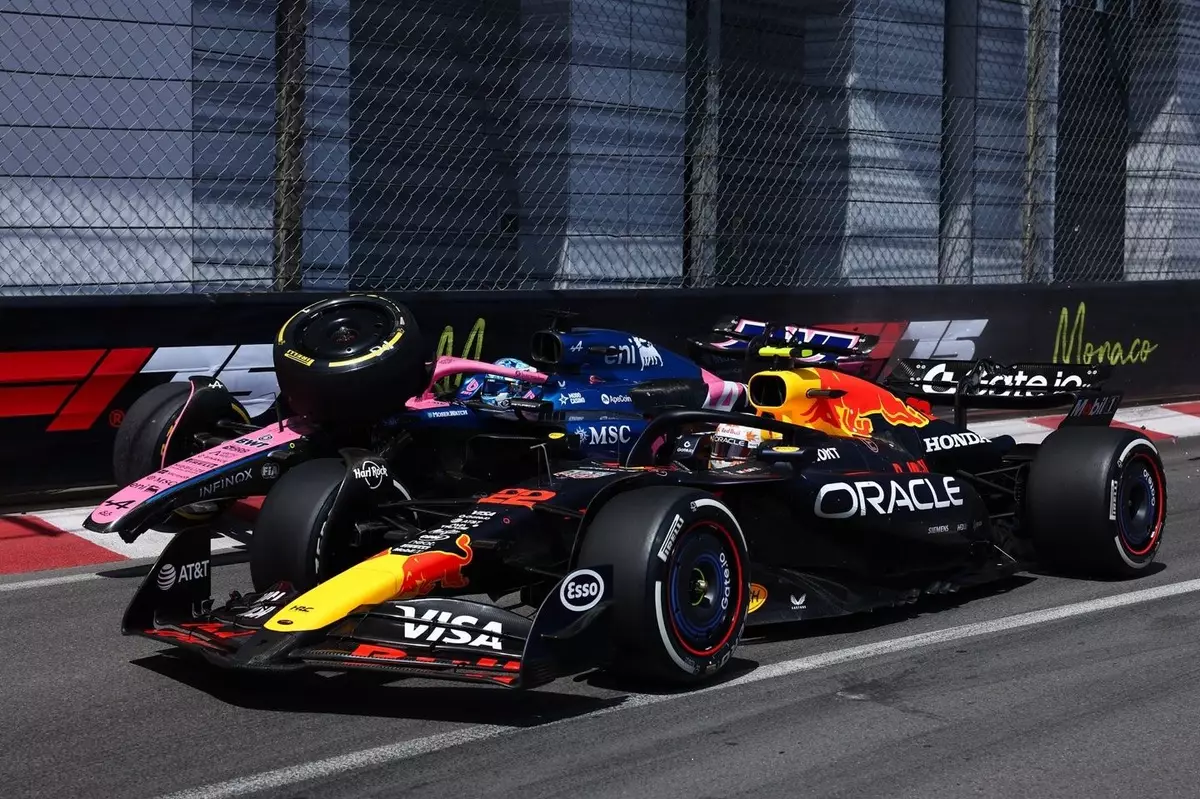The Monaco Grand Prix is not only one of the most prestigious races in the Formula 1 calendar, but it’s also known for its narrow streets and unforgiving corners. When expectations run high, incidents can easily escalate, as demonstrated by the recent clash between Pierre Gasly and his former teammate Yuki Tsunoda. Gasly’s fiery outburst following the race revealed more than just a twist of fate; it spoke to the competitive nature of Formula 1 and the thin line drivers walk between teamwork and rivalry.
Gasly attributed the crash to Tsunoda’s “erratic” decision-making under braking, a claim that has rippled through the paddock. As they battled for position in the early stages of the race, Gasly instigated an attack at the chicane. What seemed like a simple racing incident quickly spiraled into accusations and finger-pointing. “Yuki made a mistake before the tunnel,” Gasly stated, highlighting the intense scrutiny drivers come under during these split-second decisions. His assertion of adhering to his line raises questions about responsibility on the track and what constitutes fair racing.
Navigating a Minefield of Pressure
The psychological toll on drivers in F1 cannot be overstated. Each corner represents not just a physical challenge, but also a mental minefield. Gasly, frustrated both with his position and the crash, expressed disappointment in Tsunoda’s maneuvering when he felt there should have been an acknowledgment of their respective racing lines. “You already have no space to put two cars together,” he noted. This sentiment is critical; it reflects the inherent risks of racing where milliseconds matter.
Tsunoda’s reaction, a bewildered denial of wrongdoing, highlights another aspect of racing—perception. “I knew he would try to overtake, and I didn’t want to move under braking,” he remarked. This defense suggests an understanding of the racing dynamics, yet it also raises the question of how drivers interpret and act upon their surroundings during these high-stakes moments. The friction between the two drivers elevates the drama of Formula 1, captivating audiences but placing immense pressure on the individuals involved.
Team Dynamics: A Fragile Equilibrium
Team dynamics play a pivotal role in these scenarios. Gasly’s remarks signal not just a reaction to the incident but also an implicit critique of team strategy and performance, especially as Alpine grapples with its own shortcomings. After a dismal qualifying session, the fallout from the crash adds another layer to what is already a precarious season for the French team. Gasly’s comments on understanding the car’s limitations underline the struggle between individual performance and team objectives.
Alpine is at a crossroads, needing to coax the potential from their A525 car while managing the personalities in the garage. Gasly’s frustration symbolizes a larger issue that teams face when performance does not meet expectations. The intricate balance between pushing for individual success and adhering to team strategies can create divisive moments, particularly in tumultuous circumstances like those witnessed in Monaco.
A Glimpse Ahead: Optimism Amidst Challenges
Despite the turbulence of the Monaco weekend, Gasly remains cautiously optimistic about Alpine’s prospects, particularly as they shift their focus to the upcoming Spanish Grand Prix. “I think Barcelona should be better,” he remarked, anticipating a more favorable track layout for the A525. His belief that the new circuit could enhance their performance reflects the resilience and optimism that drivers must maintain even in the face of setbacks.
This forward-facing mentality is crucial in sports where every mistake can be magnified on a global stage. The ability to compartmentalize these moments and drift toward optimism demonstrates both mental fortitude and a strategic approach to racing. The contrasting high-speed layout of Barcelona serves as a litmus test for Alpine’s engineering and strategic decisions as they seek to harness their car’s strengths in a more forgiving environment.
In a sport defined by speed, precision, and split-second decisions, Gasly and Tsunoda’s debacle is a poignant reminder of the complexities and relational dynamics that fuel the thrill of Formula 1.

